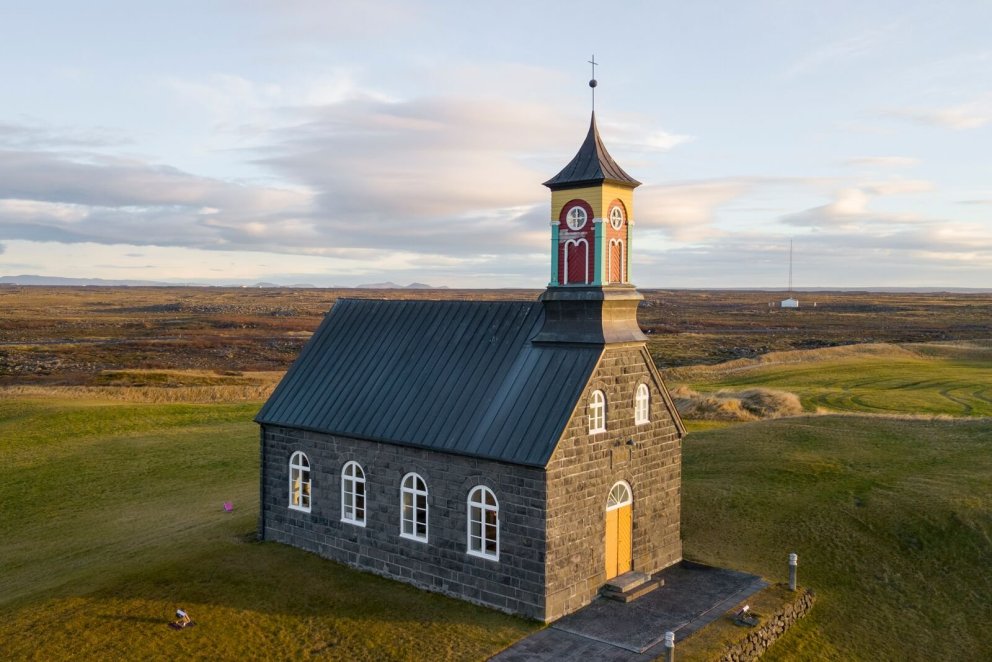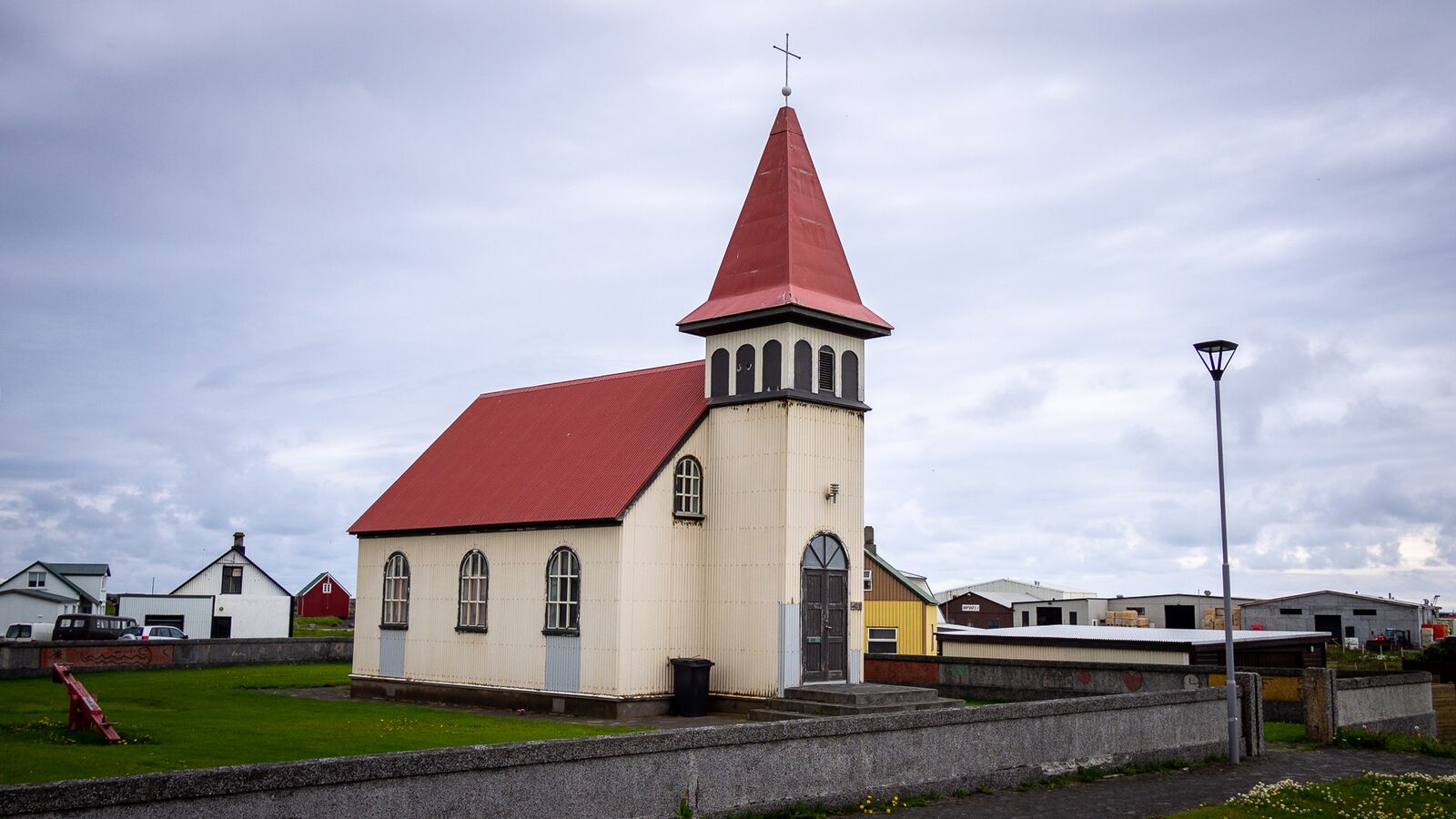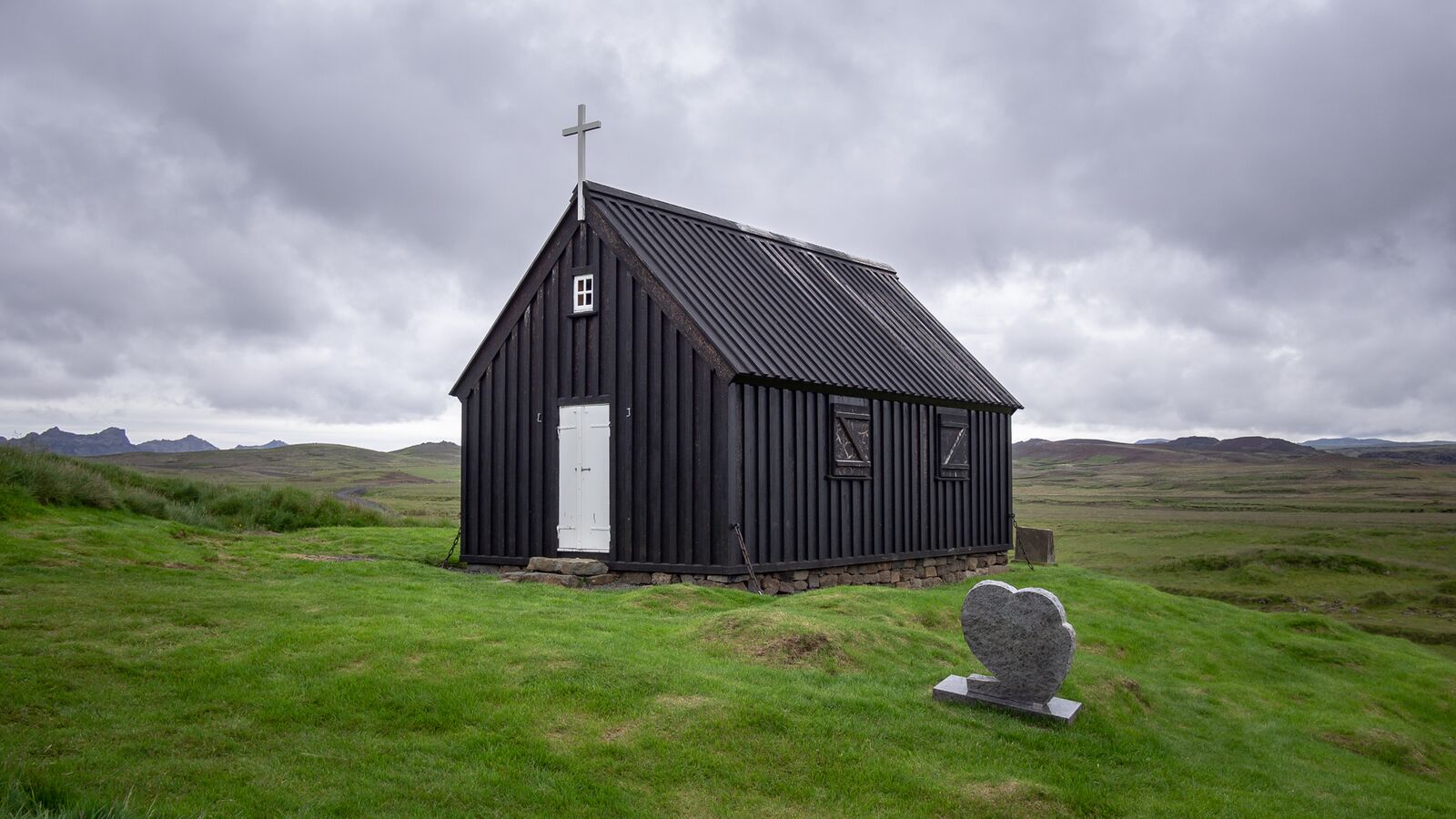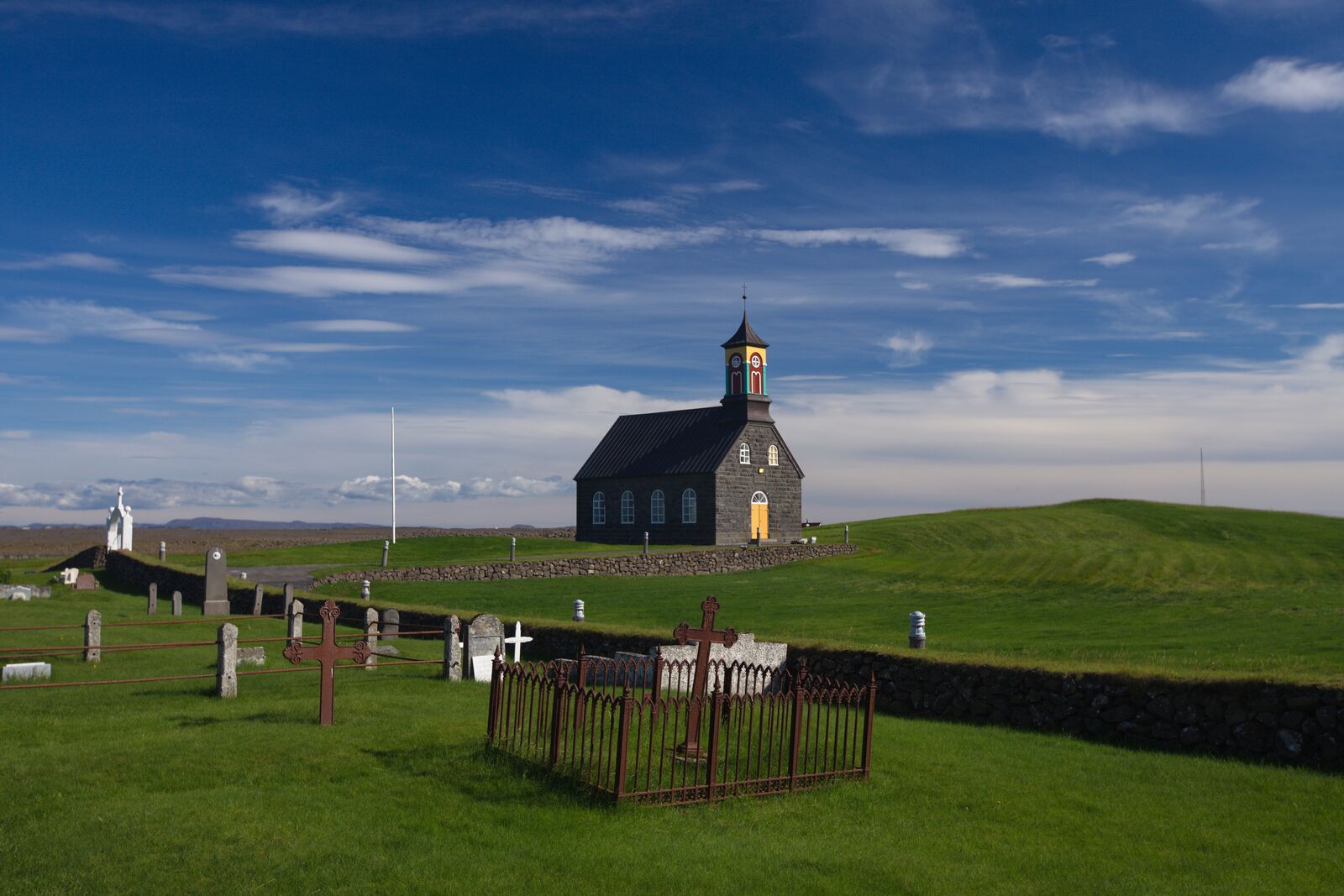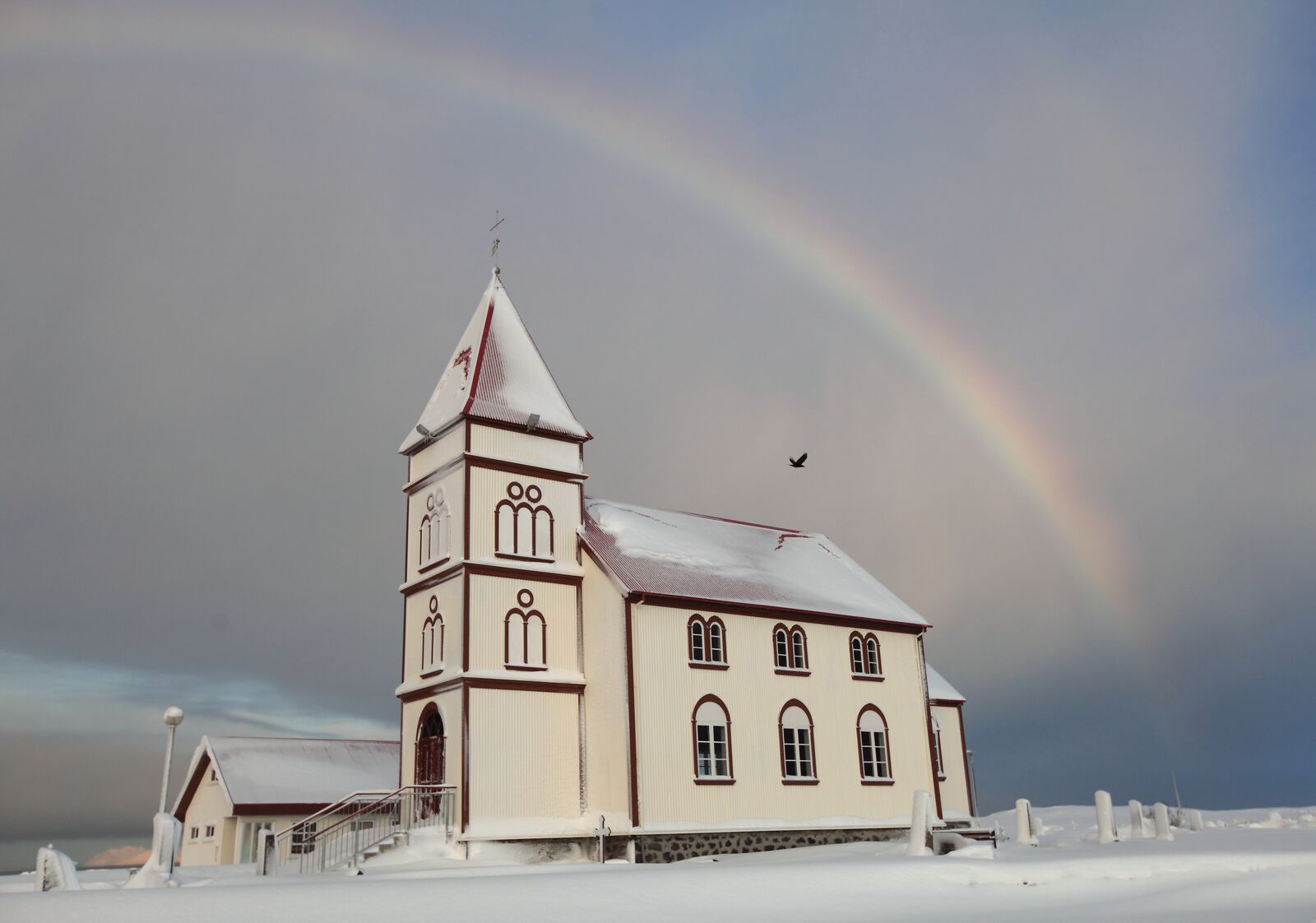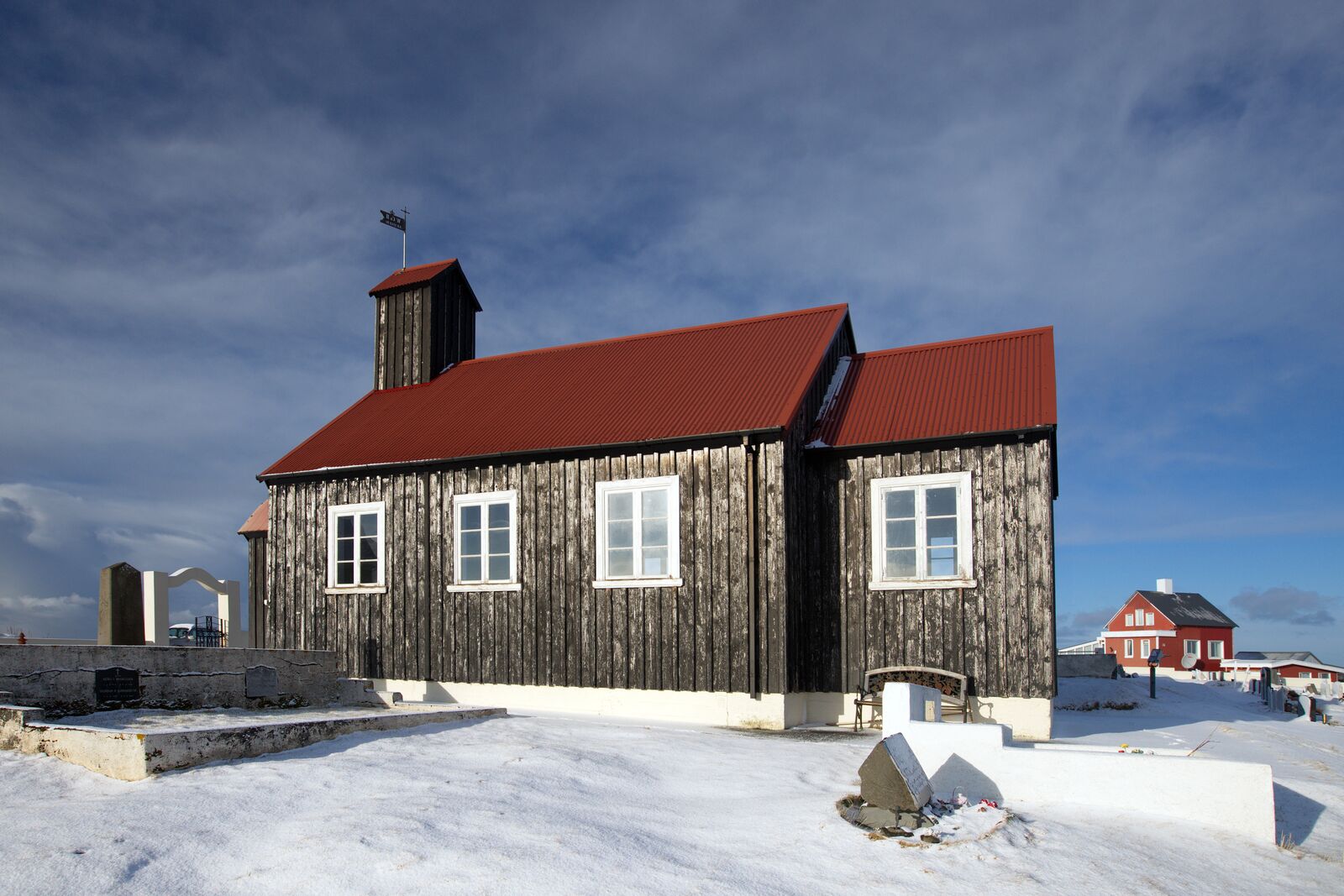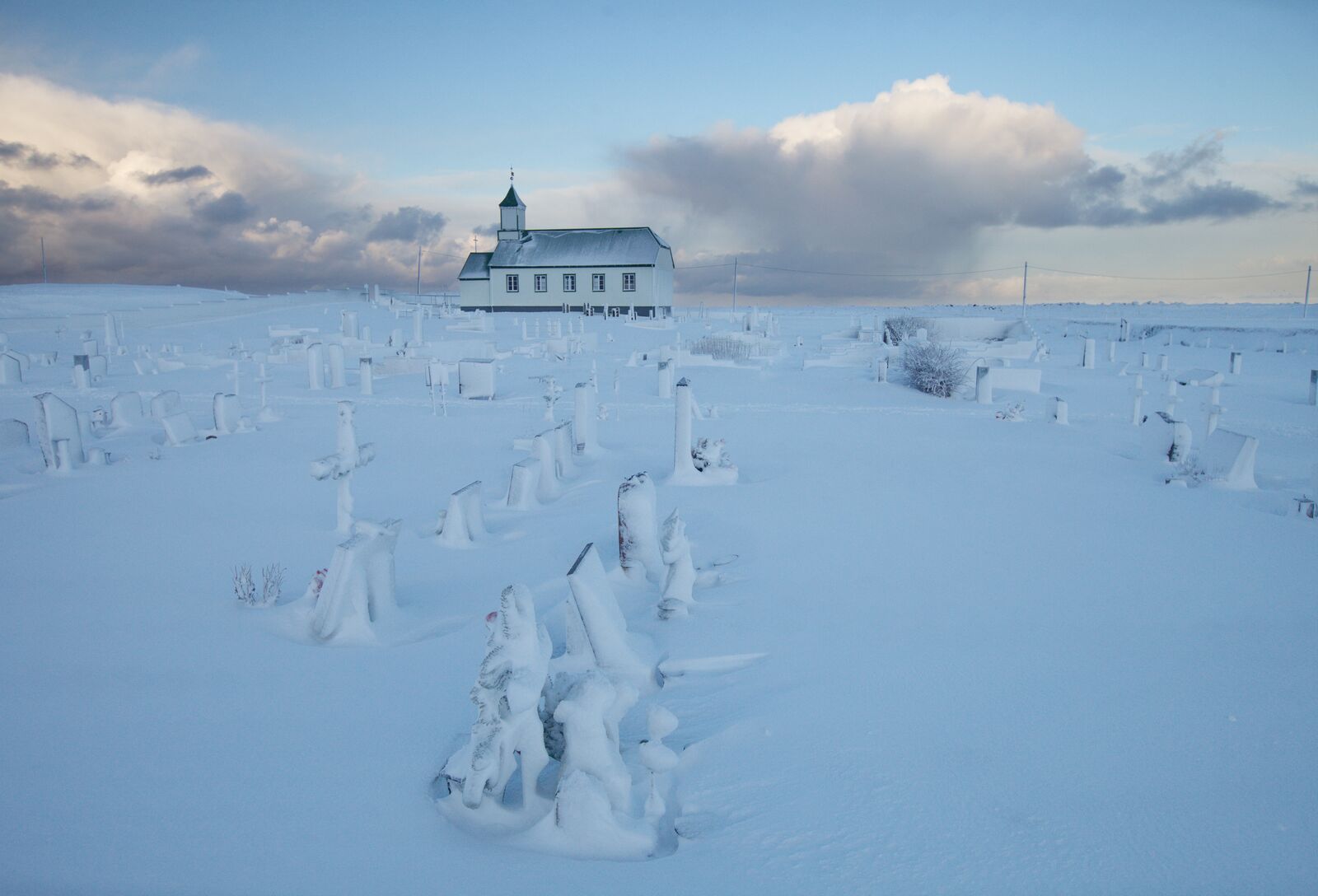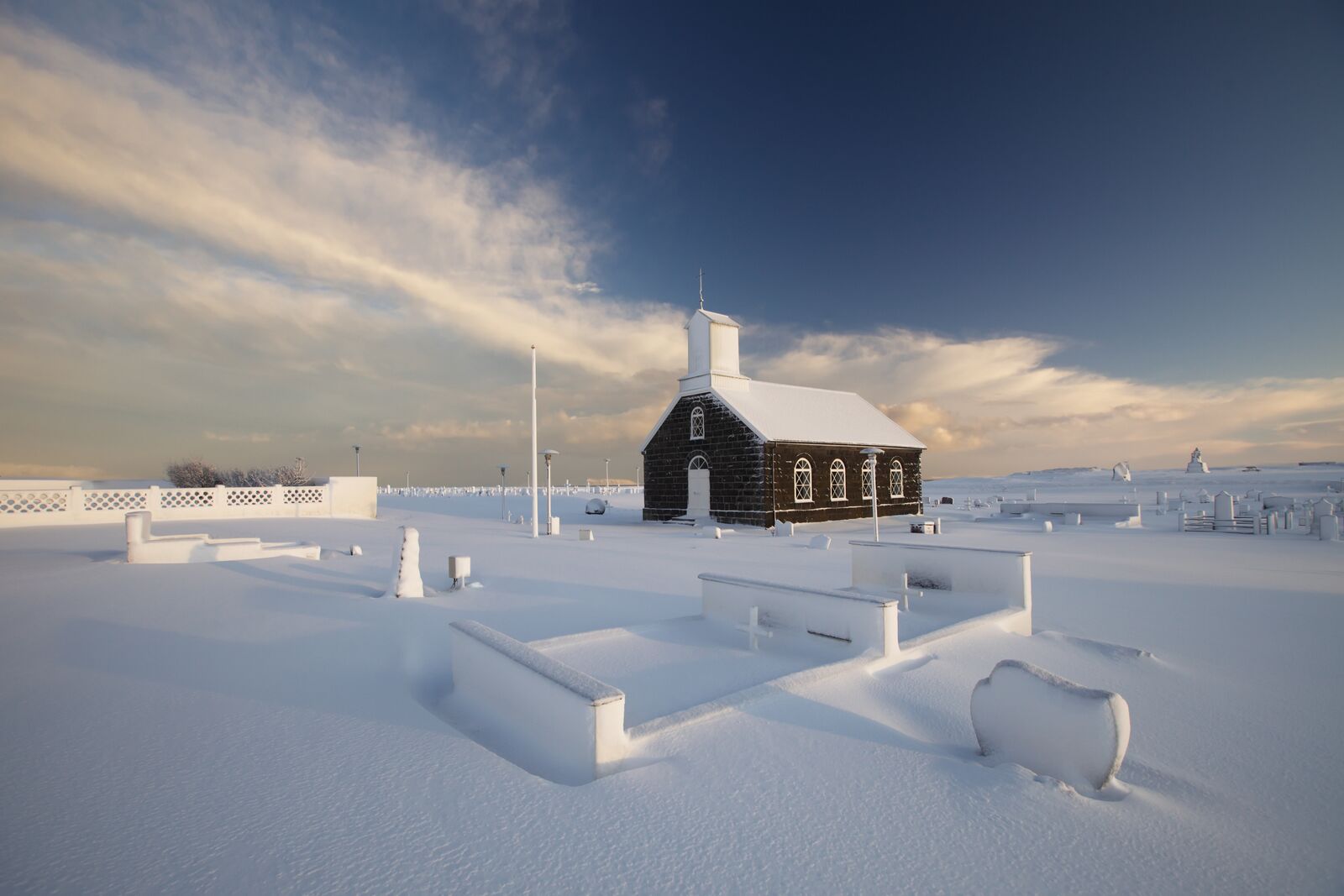The Churches of Reykjanes
Old Grindavik church
This historic church, located to the south west of Grindavik close to the port, dates from 1909. It wasn’t the first church here; the earliest records show a place of worship here in 1640. Nevertheless, the old one wasn’t considered suitable, so it was pulled down and the timber sold. The altar was saved and can be seen in the National Museum of Iceland, along with other rescued items such as the pulpit, staves and altar cloths. The replacement church was larger, constructed from wood with ironwork on the outside. A painting of Christ hung above the altar; a marble font and ornately carved wooden chair also adorned the interior. It was a popular choice, but ironically that was the reason for its demise. The congregation grew too much and would no longer fit inside. A new church replaced Old Grindavik in 1982, but the building remains for those who want to take a look.
Krýsuvík church
This black church commands an isolated position south of the geothermal area. Surrounded by countryside, the dark exterior forms a stark contrast with the snowy landscapes of winter, and is equally photogenic in summer when it stands out against lush green turf and cloudless blue skies. Its small graveyard contains just two marked graves; the uneven ground is a clue that others are buried nearby. At night, all around it is dark, making this an ideal location to come and wait for the Northern Lights to make an appearance. But though this beautiful church can trace its history back to 1857, the structure that you see before you was erected far more recently. In 2010, a devastating fire reduced the old church to a smouldering heap of rubble; only the footprint remained. Fortunately, it has been rebuilt. Services take place occasionally but this tranquil spot is the ideal place for serene contemplation.
Hvalsnes church
You don’t have to be an expert in Icelandic geology to figure out that basalt is commonly found in the country. It follows, therefore, that this stone might be used in construction. That’s the case here, in Hvalsnes, where basalt forms the walls of this picturesque church. It has a colourful tower and a light, bright interior which contrasts with the dark shades of the exterior. Consecrated in 1887, it’s still a working church, and you might wish to join the congregation for the Sunday service. They owe their place of worship to a local farmer and ship owner called Ketill Ketilsson. Not only was it his land, he also put up the money to build a church on it. Seek out the gravestone of a young child named Steinunn Hallgrímsdóttir who died in 1649 aged just four years old. She was the daughter of Hallgrímur Pétursson, who was then the parish priest but is today known in Iceland as a famous psalmist.
Kálfatjarnarkirkja
This quaint church, out in the countryside close to the northern coast of Reykjanes, is one of its prettiest landmarks. That’s especially the case at sunset, when the orange sky contrasts beautifully with the white church, or if the Aurora Borealis dances overhead on a still winter night. There’s been a church on this spot since 1200AD. This one’s a bit newer, erected like many in Iceland in the late 19th century. When it was built, it was the largest rural church in the country and was consecrated in 1893. We can thank several talented craftsmen for creating such a lovely church, which replaced an earlier turf construction. A carpenter called Guðmundur Jakobsson came up with the design, with its simple lines and tall tower. He called upon the services of a local farmer named Þorkell Jónsson to help him with the woodwork and carving. Artist Sigurður Guðmundsson painted a picture of the resurrection which hangs above the altar.
Kirkjuvogur
It’s worth taking a drive around the Reykjanes countryside as there are other isolated churches to reward your efforts. Kirkjuvogur, whose name translates as Church Cove, is one of them, to the west of the peninsula in Hafnir, close to the Atlantic Ocean. This black wooden church that replaced a church damaged in a severe storm at the end of the 18th century. This renewal didn’t come cheap, costing a sum of money that was the equivalent of 300 cows. However, it was considered important to have a place of worship, so the money was found. For a while, it was painted a lighter shade but has been black again since the early 1970s with a covering of tar.
Útskálar church
This attractive church with its green roof and white walls was consecrated in 1863. However, it will always be associated with tragedy. The waters that surround Iceland can be treacherous and over the centuries many have lost their lives as they ventured out to source food. Centuries ago, a terrible storm cost 156 mariners their lives and the fishermen drowned at sea. Some of them weren’t local; they’d come south for work during the fishing season as was common at the time. Some were never seen again, but in all 89 bodies were recovered. 42 of them were buried in the church graveyard three days later. A day afterwards, a further 47 bodies washed up in Garður and were interred in the same grave.
Innri-Njarðvík church
This delightful church is located close to the waterfront in Njarðvík. It’s only a short drive from Keflavik Airport, so if you’re a bit early for your flight, hang onto the rental car for a few more minutes and check it out. The church dates from the 1880s, when a local farmer called Ásbjörn Ólafsson insisted they should have one. The stone used in its construction was sourced from the shore and the countryside beyond the area that had been settled at that time. Magnús Magnússon oversaw the work and the carving. Take a closer look at the church tower: one of the clocks is an antique dating from 1725.

